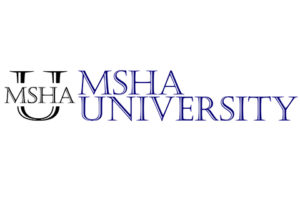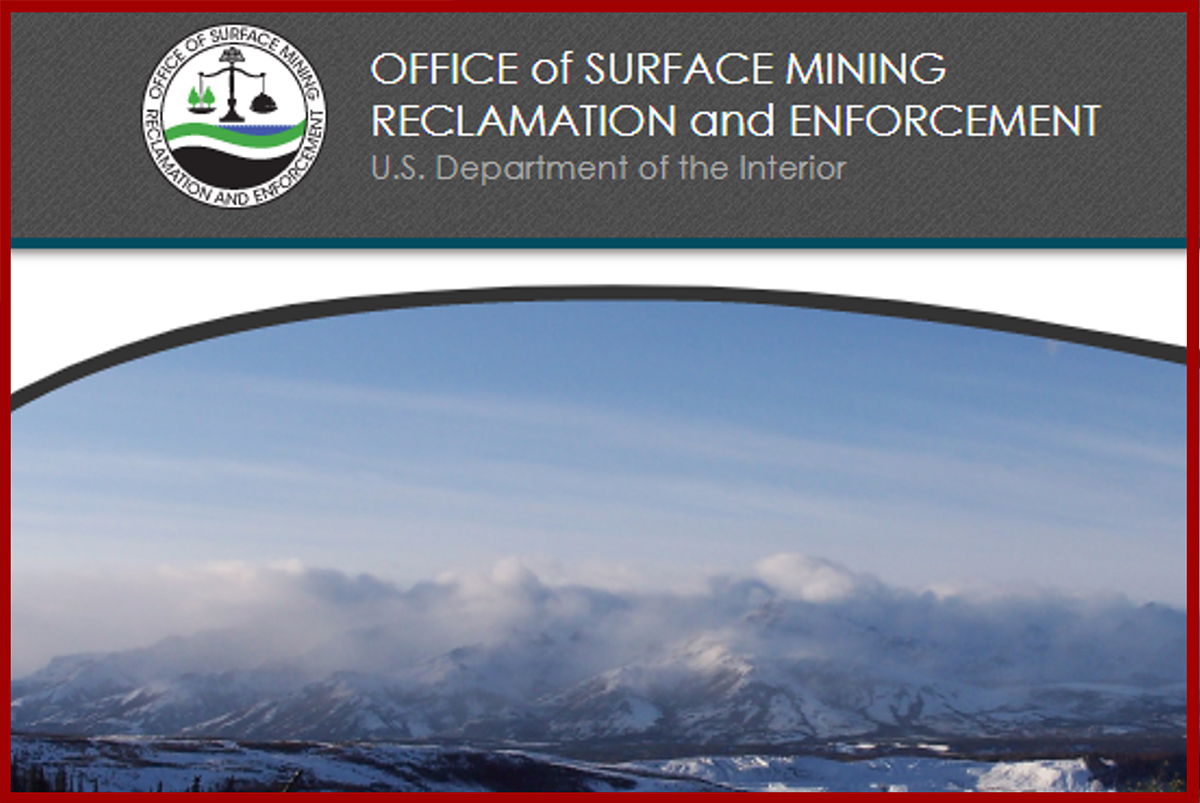In a similar way that the Mine Act of 1977 established MSHA (the Mine Safety and Health Administration), the Surface Mining Control and Reclamation Act of 1977 (SMCRA) created OSMRE (the Office of Surface Mining Reclamation and Enforcement). To fully understand the scope of mining oversight in the U.S., it’s important to learn about what OSMRE is, and how it relates to SMCRA.
So, what is OSMRE and what do they do? The Office of Surface Mining Reclamation and Enforcement is a bureau within the U.S. Department of the Interior (DOI) that was established in 1977 by the Surface Mining Control and Reclamation Act. OSMREs primary objectives are to “protect citizens and the environment during mining and assure that the land is restored to beneficial use following mining...”
Prior to 1977, coal mining companies in the U.S. were not held legally responsible for the effects their mining operations had on the environment and the people impacted by pollution. And in many cases, mining operations would simply be abandoned when a coal seam was exhausted, leaving a wasteland of toxic waterways and destroyed habitats. The creation of OSMRE would be a monumental step toward changing all that.
OSMRE Origins
With the creation of both MSHA and OSMRE in 1977, the U.S. mining industry would never be the same. While MSHA began with the intention of overseeing regulations for the safety and health of miners and mining contractors, OSMRE’s original purpose was to ensure the long-term health of the environment and to protect people’s health, safety, welfare, and property from negligent or abusive mining practices.
When the U.S. Congress passed the SMCRA of 1977, OSMRE was created as the bureau responsible for “establishing a nationwide program to protect society and the environment from the adverse effects of surface coal mining operations, under which OSMRE is charged with balancing the nation’s need for continued domestic coal production with protection of the environment.”
Since OSMRE’s inception, many states have developed programs to manage environmental mining issues. So, these days, OSMRE provides more of an oversight role to help support the state’s efforts.
TIP! – Go to our Resources page for a link to OSMRE’s home page.
OSMRE Primary Activities and Programs
While OSMRE’s core focus is to protect society and the environment from the harmful effects of mining, their efforts cover two important categories of mines:
- Lands and waterways degraded by mining prior to 1977 (including abandoned mines)
- Protecting people and the environment during current and future mining operations
OSMRE’s major programs include:
- Reclaiming abandoned mines – OSMRE’s Abandoned Mine Land (AML) Reclamation Program “addresses the hazards and environmental degradation posed by these legacy mines” for the millions of Americans who live within one mile from an abandoned coal mine.
- Regulating coal mines – Via Title V of SMCRA, OSMRE “ensures that coal mining operations are conducted in an environmentally responsible manner and that the land is adequately reclaimed during and following the mining process.”
- Technology develop and transfer programs – In its efforts to support states and tribes managing their own reclamation programs, OSMRE focuses on activities that “support and enhance the technical skills that states and tribes need to operate their regulatory and reclamation programs in order to effectively implement the Surface Mining Control and Reclamation Act of 1977 (SMCRA).”
TIP! – Go to our Resources page for a link to OSMRE’s Major Programs page.
Reasons to Contact OSMRE
As the primary federal organization overseeing coal mining activities, there are a number of reasons that someone might contact OSMRE. Here are a few of the most common:
- Request a mine inspection if you suspect or observe a violation or hazardous conditions
- Call about reclamation concerns regarding an abandoned mine
- Submit a Freedom Of Information Act request
- Locate and request a mine map
TIP! – Go to our Resources page for links to an interactive map of contacts by state and region and the National Mine Map Repository.
Related Mining and Environmental Regulations
There are two primary regulations that OSMRE relies on for guidance and enforcement:
- SMCRA (the Surface Mining Control and Reclamation Act) – This is the 1977 Act of Congress that established SMCRA.
- Code of Federal Regulations (CFR) Title 30 – Chapter VII – Office of Surface Mining Reclamation and Enforcement (DOI) Parts 700-999. This set of federal regulations covers a very broad range of policies on inspections, enforcement, penalties, requirements for reclamation operations, and much more.
OSMRE Resources
OSMRE provides a range of resources on their site. Here are a few that may be most meaningful to the general public:
- Emergency Management – for links to additional organizations to help citizens prepare for emergency situations
- Jobs – for job opportunities and details on benefits, holidays, leave, and other employee support info
- New and Stories – for details on recent decisions, industry guidance, budget details, and plans
- Safety and Health – for additional governmental organizations that contribute to OSMRE’s safety and health efforts
TIP! – Go to our Resources page for links to each of these OSMRE resources.
Related Questions
What Is The Purpose Of SMCRA?
The Surface Mining Control and Reclamation Act of 1977 was a significant piece of congressional legislation that did two primary things:
- It established the Office of Surface Mining Reclamation and Enforcement (OSMRE).
- It held surface coal mining operators legally accountable for the management and control of the environmental impacts of their mining operations, including ensuring that mine reclamation was performed.
What Do You Mean By Reclamation?
In the context of surface mining, the term “reclamation” defines a process of returning mined land to a “productive and beneficial use.” This process very generally involves:
- Replacing the overburden that was removed to access the coal seam
- Grading and compacting the replaced overburden to rebuild natural landscape contours
- Replanting indigenous vegetation
- Restoring watersheds and habitats
Ultimately, the purpose of mine reclamation is to protect our citizens and our economic welfare through the preservation of our nation’s natural resources.

